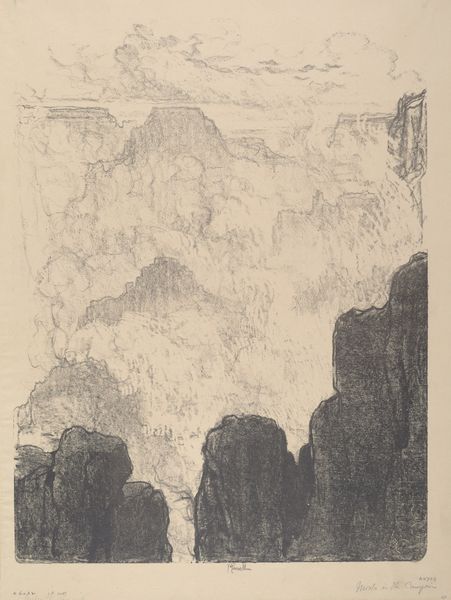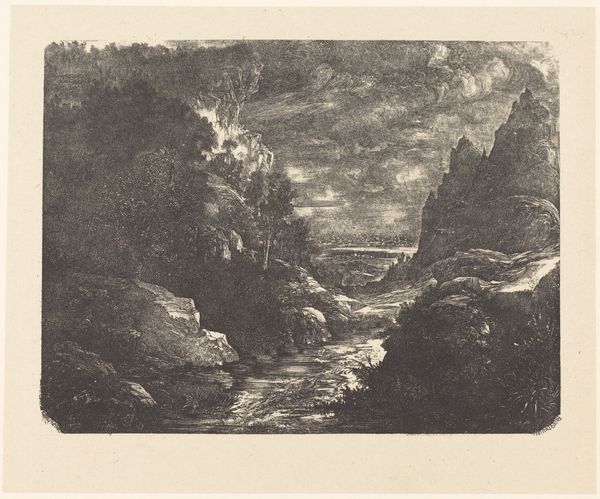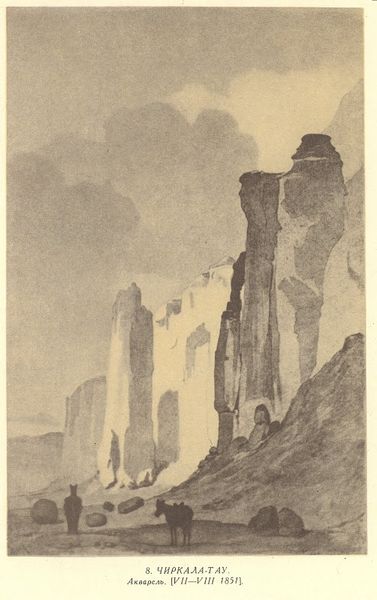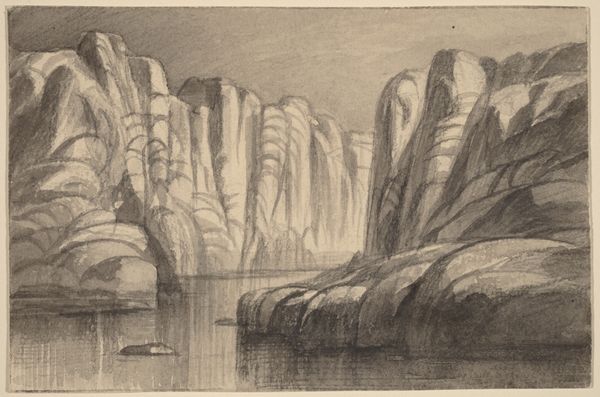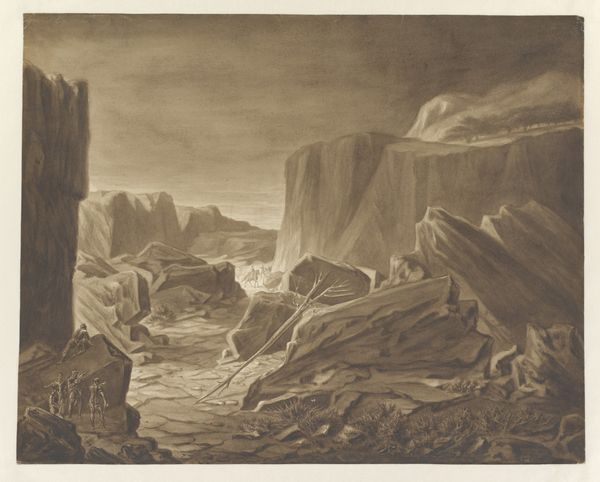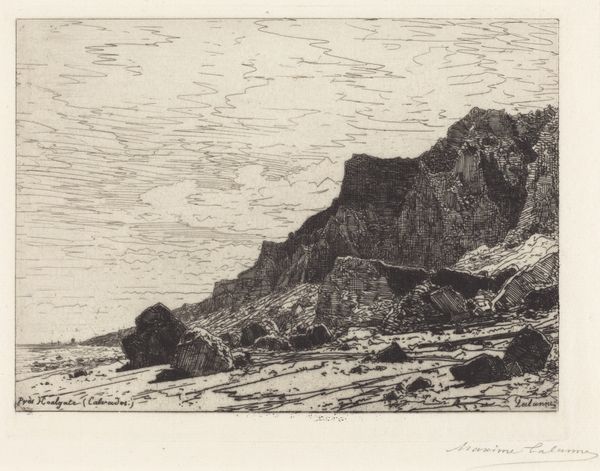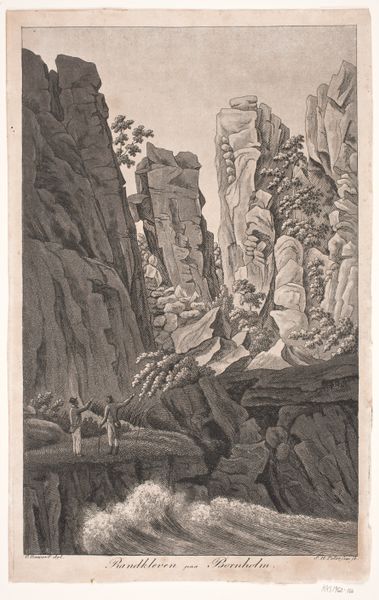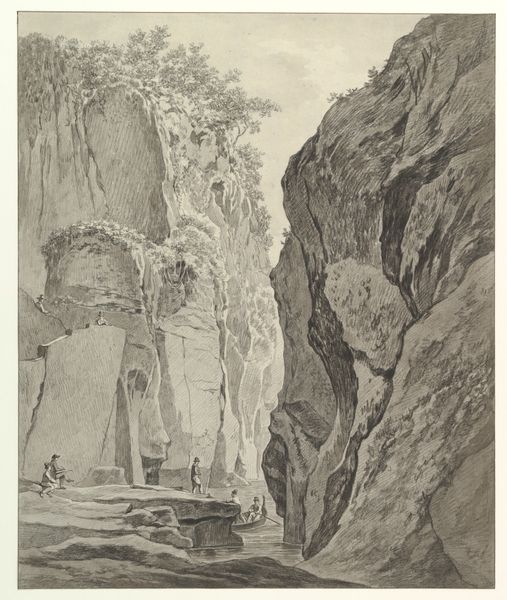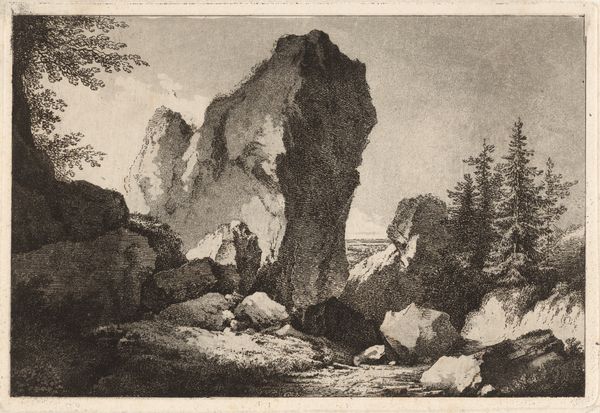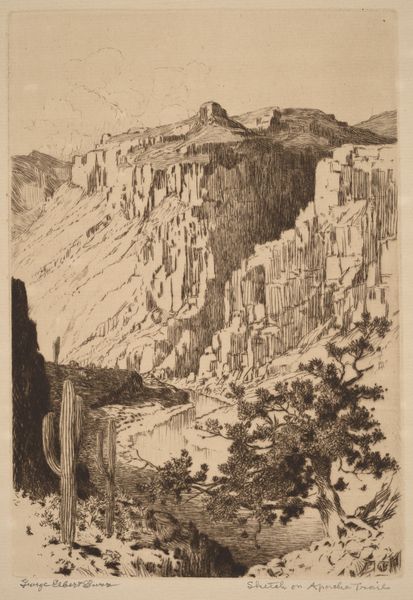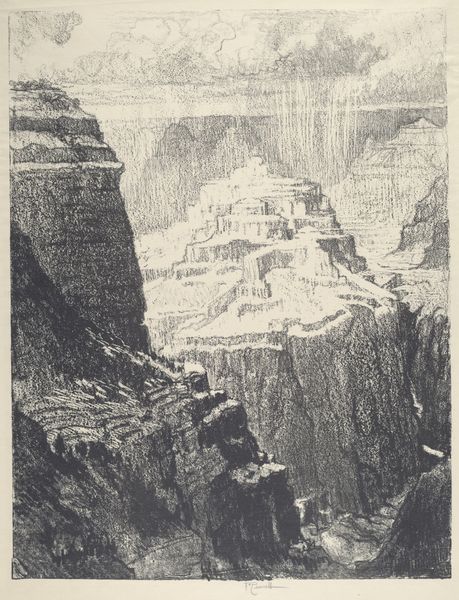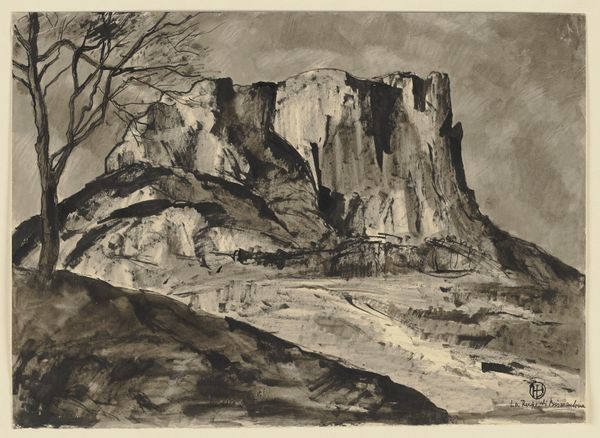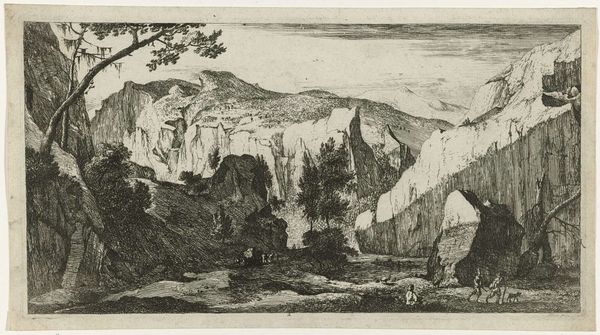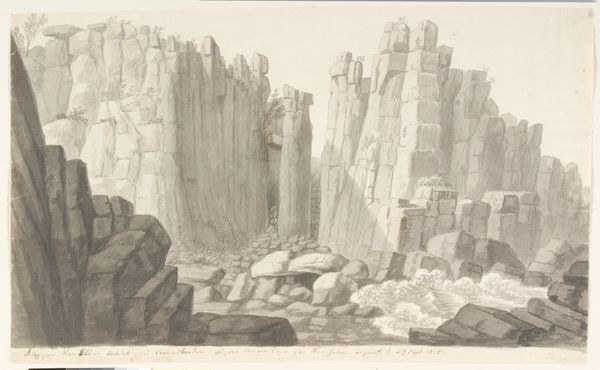
drawing, print, pencil
#
pencil drawn
#
drawing
# print
#
pencil sketch
#
landscape
#
pencil drawing
#
pencil
#
realism
Dimensions: image: 42.55 × 55.25 cm (16 3/4 × 21 3/4 in.) sheet: 46.36 × 58.1 cm (18 1/4 × 22 7/8 in.)
Copyright: National Gallery of Art: CC0 1.0
Editor: This is Joseph Pennell's 1913 print, "The Cliffs of the Trinity," a pencil drawing rendering a somewhat dramatic landscape. The craggy peaks seem to dwarf everything, even the building perched atop one. What can you tell me about this piece? Curator: It speaks of the sublime, doesn't it? Notice how the monumentality of the rocks almost dwarfs that structure – that's part of the intent. These towering forms evoke not just a physical space, but also a sense of spiritual or psychological awe, perhaps even vulnerability. The 'Trinity' evokes something, doesn’t it? Editor: I suppose so. There's a definite sense of imposing grandeur. The building, while prominent, feels precarious. The cliffs themselves could also resemble something. Are they intended as something more than geological formations? Curator: Consider the cultural context. Pennell, deeply involved in debates about architectural preservation, rendered many famous landmarks. Cliffs may be solid structures but erosion over geological time indicates impermanence, something nature reclaims over time. Could they represent enduring, timeless truths? Think about the cultural memory embedded in such landscapes – cathedrals and places of worship, for instance, so frequently occupy naturally dominant locations that are reminiscent of places where people make vows of poverty, or perhaps pilgrimage or other things like sacrifice or redemption. How does this symbolism shift your interpretation of Pennell’s print? Editor: That reframes it. It's not just about capturing a scene, but also about reminding the viewer about their faith – its symbolism is far reaching.. It connects the built environment to nature in this dialogue about time, memory and impermanence. It goes from picturesque to, well, kind of profound. Curator: Exactly. And that precarious structure reinforces the fragility of even our grandest endeavors against the vast backdrop of history and the natural world. The artwork isn't static; it's a meditation on permanence and change. Editor: I hadn’t thought about it that way. I appreciate your insight, it completely changed my understanding of the print!
Comments
No comments
Be the first to comment and join the conversation on the ultimate creative platform.
